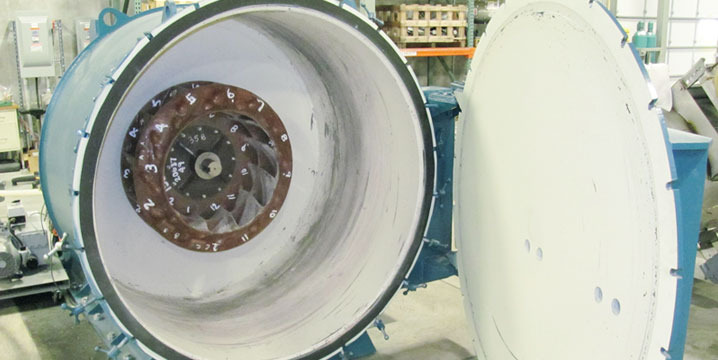For applications of big power plant and heavy industries, centrifugal fans are very important components for the effective running of the whole facility. So, it is critical to make sure the fan rotors can have a long and safe operation with its operating uninterrupted. To do this, over-speed testing performed on the rotors at the manufacturer’s factory provides the guarantee.
For the end user, large industrial and utility fan rotors that have over-speed testing performed on in the shop will bring various benefits. During the over-speed testing, the rotor is exposed to higher stresses than the rotor will experience for normal running.
By performing the over-speed testing on the rotors, the goal is to allow the end user to feel rest assured and know that the rotors have undergone over-speed tests at speeds that well exceed the highest running speed. The second benefit is that through the non-destructive inspection technique that is used to check the welded joints of rotors before and after the over-speed testing, it is found that high stress levels can be tolerated by the rotors with no cracks appearing. Also, a third benefit is that making the rotor exposed to high stress levels has an advantage in terms of the fatigue life of the rotors.
If in signing the contract, one requirement is to have over-speed testing performed, it is the responsibility of the designer and manufacturer to have a significant stress safety factor in its design work on the one hand and demonstrate that the product that is finished can run satisfactorily before the product goes into normal operation. All this help provide evidence in an all-round way that the materials and workmanship used for the fan rotors have brought out a piece of equipment for it to be used safely and reliably even at speeds well over the expected operating range.

A warm and fuzzy feeling is only one thing that comes out of the over-speed testing. Finite element analysis techniques (FEA) are adopted for the design of centrifugal fan rotors for power plant and other industrial applications. It will allow the engineer to have the information needed to make sure that the rotor has no high stress leading to deformation or tensile failure.
PREVIOUS: Fan bearings (3)